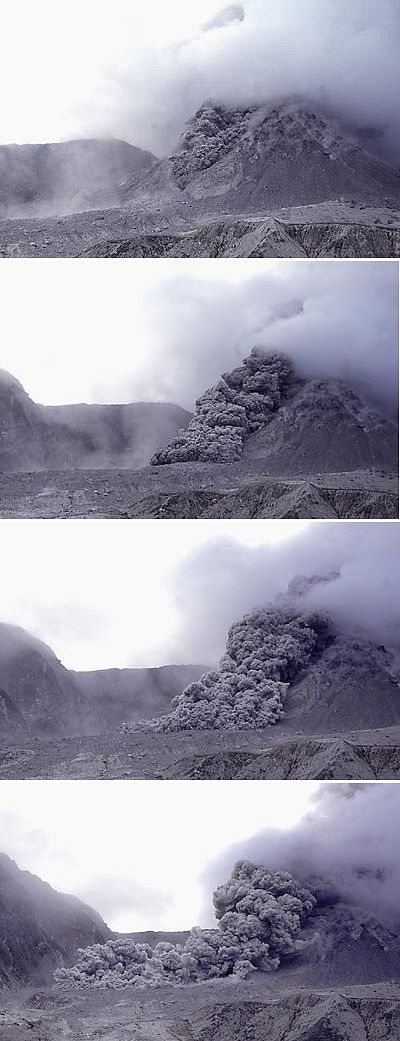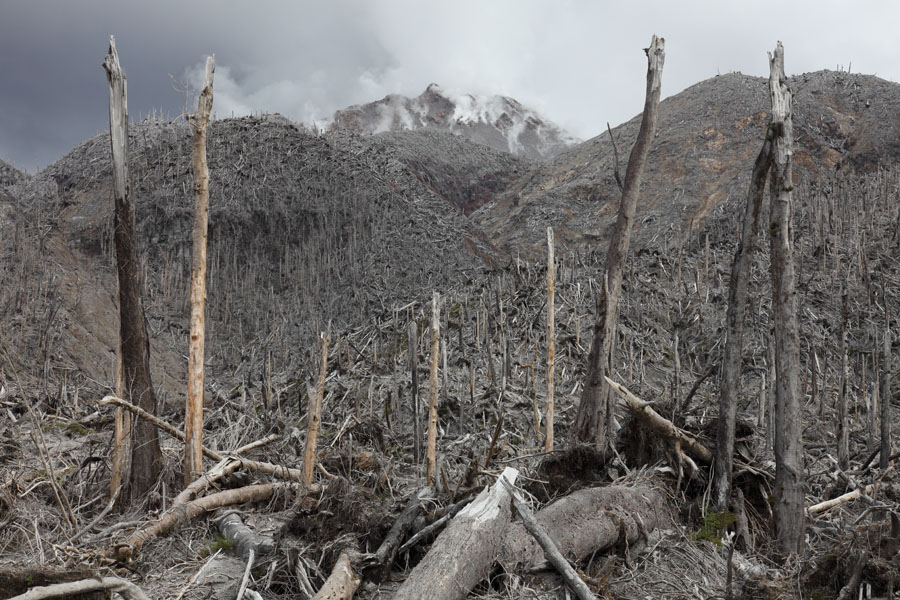http://www.youtube.com/watch?v=1Vn6kxfD3Ek
I personally think that the mega-volcano eruption is the most imminent threat, though surviving it would be a challenge for any living thing.
When the eruption happens it will turn the rain to acid, you wouldn't be able to see the sun for months, the world would be in a nuclear winter
(meaning winter would be much harsher almost like the polar regions, depending on the intensity of the eruption, most of the year.), marine life
would die out and so would most of the plant life.
I think that the only way we could survive anything like that, would be to cooperate with each other, recycle the water, grow our own food.
We would probably have to live in caves to escape from the acid.
Though during the eruption, anything in a certain area around the volcano, would be annihilated. If the people weren't burnt to death, they'd probably breath
in the ash, which would turn to something like cement once in the lungs due to the fluid that resides there, You wouldn't be able to use vehicles because they
would also be full of ash and they wouldn't run. If the vehicles did work, they'd have a hard time getting about due to the layers of ash settled onto the ground,
possibly up to 8 meters in places. It would be like the eruption in Pompeii ( Italy) but much much worse.
Like in this image, people would be mummified, frozen into position, or more precisely, backed into position, by the burning cloud of ash. This cloud
would be moving down the hills and across plains at over 300 km/h.
People close to the crater wouldn't even realize the volcano had erupted, people in near by cities "may" get a few seconds warning, but for those people,
The cloud would get there before the sound.
People further away may get a bit more warning but the won't be able to get away.
People around the world would hear the explosion, probably several times over as the echo travels around the planet. about half a day later, they would also be
feeling the effects of the eruption. The night would come early or wouldn't end depending on the time of day. It would also be very cold and a few days later
it could possibly snow. If it rained, the rain would be very corrosive.
I want to do this for my web site because it is much more imminent than any other threat like an asteroid or the black hole. The other imminent possible threat would
be a nuclear exchange between Russia and America due to a misunderstanding, though this is only a theory, The volcano is very real, and some scientist think the
eruption is over due.
here's a diagram showing most of the things i have explained so far.
This a pyroclastic flow, (i think it's from mount saint hellens) the rushing cloud of hot ash, and possibly droplets of lava. If you cloud see the cloud, there would defiantly be no escape.
Flows like this mainly go down hill, that's how they pick up speed, but once at full speed vary little can stop them, apart from the drag from the earths gravity and atmosphere.
They can also go up hills as the top half of the cloud would simply skim across the top of the hill.
Here's the development for a pyroclastic flow. Im not sure a what interval the picture were taken but at a guess they were in quick succession. This also shows how it moves across the land and doesn't loose energy or ferocity.
Most cars that run would not be able to escape a pyroclastic flow, especially in a compact area like a city. THe only thing that bothers me here is that the flow would also tear down the buildings with the heat and the force the cloud creates.
Like in this image ash would also be falling, even a fine layer would be enough to slow down traffic, and there wouldn't be any escape.
What the flow leaves behind would be something like the image above. There would probably be fires here and there and alot of rubble would be buried under ash.
THis image show the depth that ash falls can get too. This ash fall isn't very old, even though there is plants. Though volcanic ash and lava are extremely fertile and plant life can get a hold relatively quickly.

Scientists are montioring over 250 small earth quakes that have occurred in Yellowstone national park over the last few days.
While minor earthquakes are quite ‘common’ in this area, this level of seismic activity has not been witnessed before.
Reading this reminded me of a Horizon programme I watched years ago, about ‘Supervolcano’s’…
“It is little known that lying underneath one of America’s areas of outstanding natural beauty – Yellowstone Park – is one of the largest supervolcanoes in the world. Scientists have revealed that it has been on a regular eruption cycle of 600,000 years. The last eruption was 640,000 years ago… so the next is overdue.
And the sleeping giant is breathing: volcanologists have been tracking the movement of magma under the park and have calculated that in parts of Yellowstone the ground has risen over seventy centimetres this century. Is this just the harmless movement of lava, flowing from one part of the reservoir to another? Or does it presage something much more sinister, a pressurised build-up of molten lava?”








0 comments:
Post a Comment